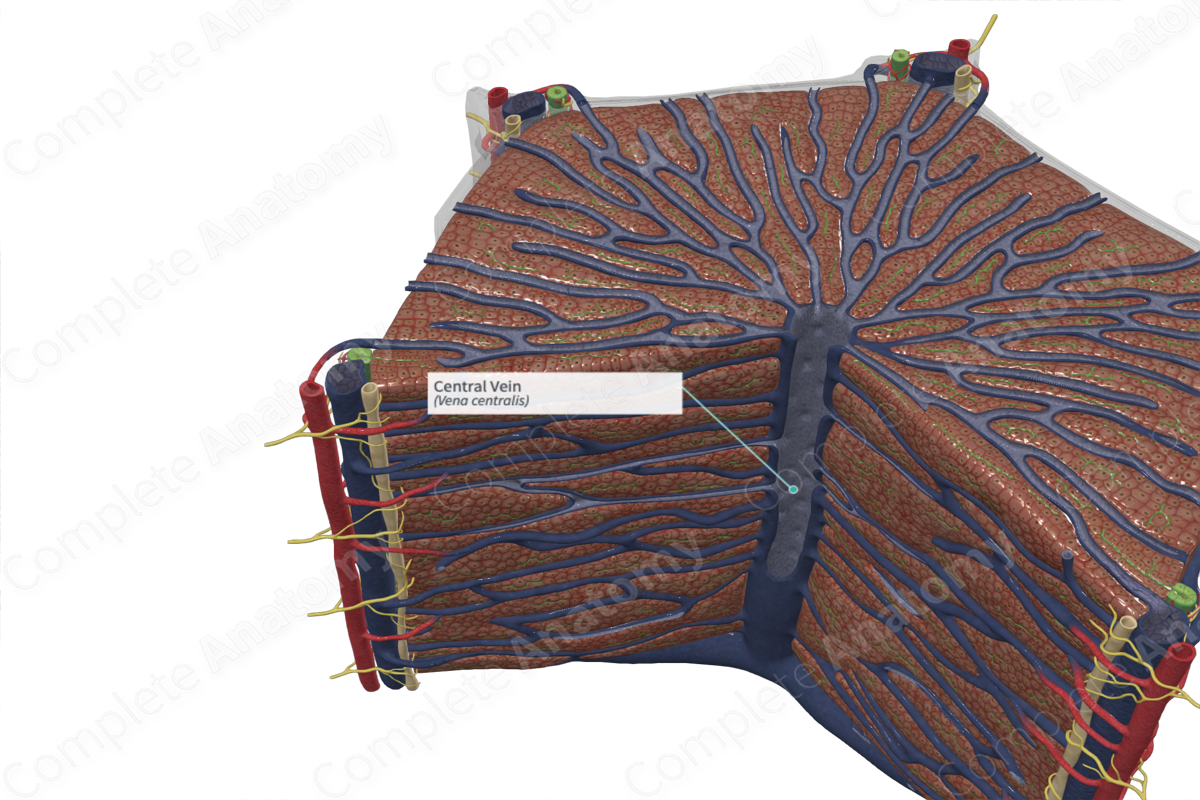
Quick Facts
The central veins of liver are the veins in the middle of the hepatic lobules, draining into the hepatic vein (Dorland, 2011).
Structure/Morphology
The central vein is a relatively thin walled, but quite large, venule located at the center of the classic hepatic lobule. It is lined by endothelium, encompassed by a thin layer of collagen and elastic fibers. It receives blood from the hepatic sinusoids.
The central vein drains directly to the sublobular vein, which drains into the larger hepatic vein. The central vein is part of the hepatic venous system and differs from the portal venous system in that its function is to ultimately carry the deoxygenated blood back to the heart.
Anatomical Relations
The central vein is located in the center of the classic hepatic lobule.
Function
The central vein receives deoxygenated blood from the sinusoids of a hepatic lobule. The central veins ultimately drain into the hepatic venous system to return blood to the heart.
References
Dorland, W. (2011) Dorland's Illustrated Medical Dictionary. 32nd edn. Philadelphia, USA: Elsevier Saunders.
